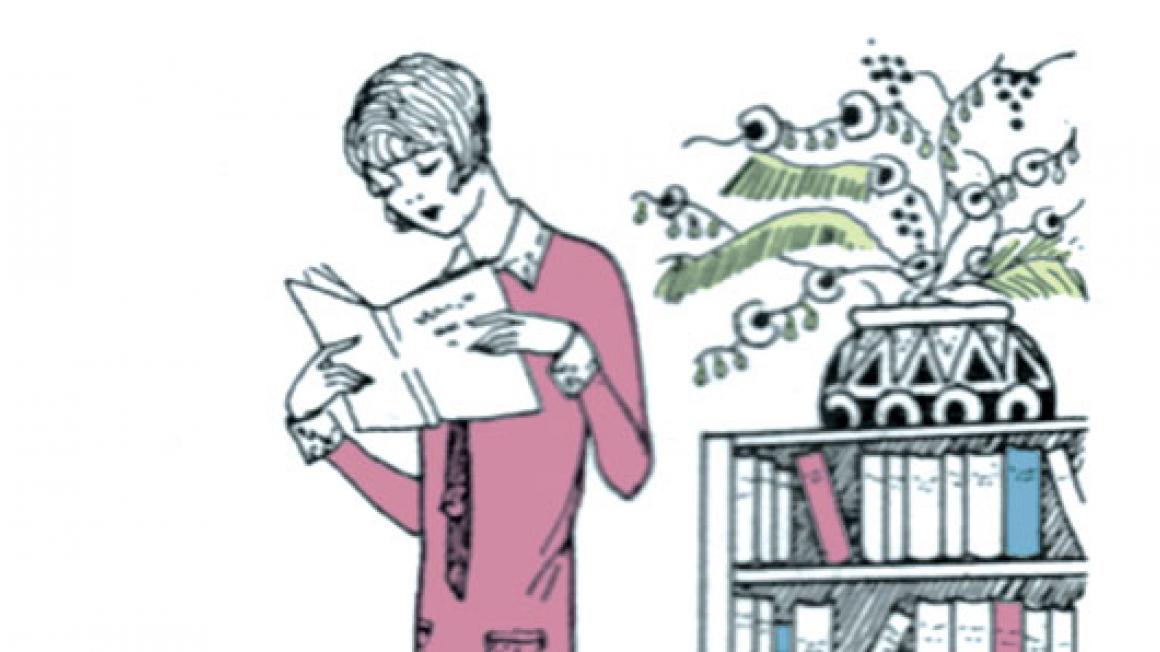The Daily: December 8
If you've ever wondered why your bra doesn't fit properly, the answer might be here. Experts believe they have finally found the reason why so many women complain of ill-fitting cup sizes. Unlikely though it sounds, the sizing system used by the lingerie industry dates back a hundred years – and is based on men's measurements. Sue McDonald, a bra-fitting specialist who has researched the system's origins, said bra sizes were developed from blouse sizes, and these in turn were based on male military uniforms from World War I. Joanna Scurr, an expert in breast health from Portsmouth University who carried out separate research in the area, explained that the cup-sizing system was never designed to function above a size D, which is a problem as the female form today tends to be far fuller than it was back then. 'Our research shows that as breasts get larger, the measuring system gets less accurate,' she said. Could it be time for an updated measuring system?
Meanwhile, a woman who was born before WW1 even broke out celebrated her 110th birthday on Saturday. Emily Tremonti from Connecticut recognised the milestone date surrounded by her great-great-great nephews and nieces.
Gardener discovers Anglo-Saxon 'grave marker' worth thousands
When John Wyatt, 32, a gardener from Chester bought a pile of natural stones for £50, he did not expect that one of them would actually be worth £10,000. But buried amongst the stone blocks was an Anglo Saxon 'grave marker' carved with a Celtic cross and a bird. The bird is believed to be an eagle, a symbol of St John the Evangelist. Experts believe the stone may have once formed part of a cross-slab from an early Christian monument, but that it may also have been used as a grave marker or to decorate a window or an internal doorway. It is even possible that it was smashed by Viking invaders as an act of defiance against the Christian population of Britain in the ninth century. The find is being auctioned off tomorrow by Duke's, with a pre-sale estimate of £10,000, and Mr Wyatt said he hopes to pay off some of his mortgage with the money it makes. Also going under the hammer at the same sale is a Roman sarcophagus that for years acted as a plant pot in an Oxfordshire garden.
Perfectly preserved ship from 1923 found off Hawaii coast
Divers have uncovered a preserved 'ghost ship' in 2,000 feet of water nearly 20 miles off the coast of Oahu in Hawaii. Sitting upright, with its solitary mast still standing and the ship's wheel still in place, the former cable ship Dickenson, later the USS Kailua, was found on the ocean floor. "It is always a thrill when you are closing in on a large sonar target with the Pisces submersible and you don't know what big piece of history is going to come looming out of the dark," said Terry Kerby, the submersible pilot. "One of our first views of the USS Kailua was the classic helms wheel on the fantail. 'The ship was surprisingly intact for a vessel that was sunk with a torpedo. The upper deck structures from the bow to the stern were well-preserved and showed no sign of torpedo damage." The USS Kailua wreck is now considered an historic site, but there are no plans for a return to the site or any recovery; the wreck is owned by the U.S. Government and is protected as Federal Property.
Invention will enable the colour-blind to watch television in more detail
Experts at the University of East Anglia have developed a computer algorithm which augments areas of red and green on television programmes, designed to enhance the television experience of people who are colour-blind. "Programmes which contain a large amount of red and green in their images such as sports, cookery and nature, would be particularly enhanced." said Prof Graham Finlayson from UEA's School of Computing Sciences. Developers of the software, called Eyeteq, say the main benefit is that normally sighted people can watch it too, as the picture for them is hardly altered. Colours are just light waves moving at different frequencies, and colour-blind people struggle to pick up the frequencies of red and green due to a misalignment of light-receptor cells in their eyes. But the new technology modifies the properties of certain frequencies so that red and green colours on the screen can be recognised by the eye. Colour blindness affects around 2.7 million people in the UK (250 million worldwide), including 1 in 12 men.
Fireworks commemorate Clifton Suspension Bridge's 150th anniversary
The skies above the Avon Gorge were lit up by fireworks as thousands of people celebrated the 150th anniversary of the opening of Bristol's Clifton Suspension Bridge. The Grade I-listed bridge first opened to the public on 8 December 1864. A fireworks display last night was part of a two-day celebration of Isambard Kingdom Brunel's structure. Today, a "modest re-enactment" of the opening celebrations 150 years ago will take place. Brunel was aged just 24 - and already regarded as a great engineer - when his design for the bridge won a public competition. His original design had included sphinxes on the bridge's towers, but a lack of money forced Brunel to tone this down, resulting in the plainer towers we see today.


